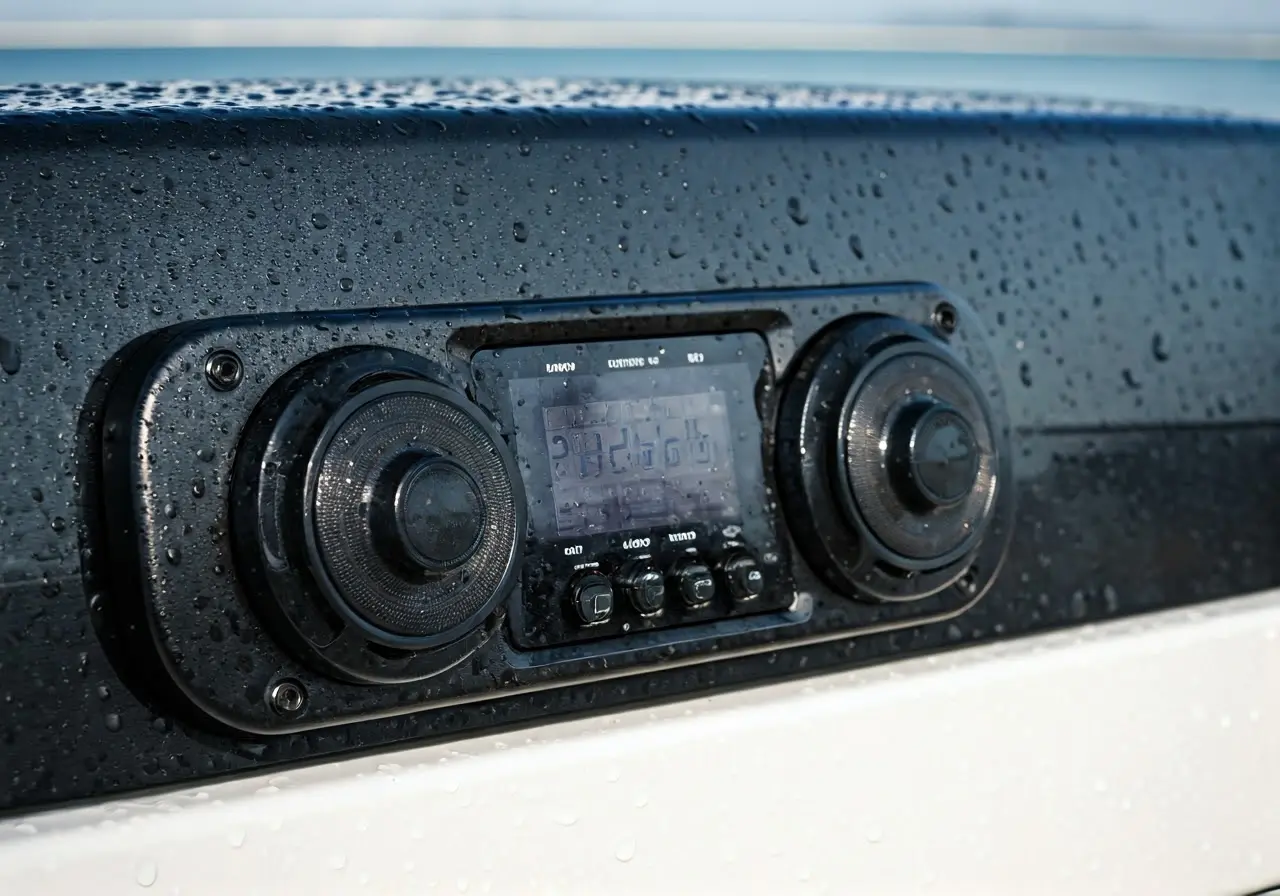How Do Marine Audio Systems Differ from Regular Audio Systems?
If you’re considering installing an audio system on your boat, you might be wondering what makes marine audio systems different from the regular audio systems you use at home or in your car. This FAQ will guide you through the key differences, so you can make an informed decision.
What are Marine Audio Systems?
Marine audio systems are specifically designed for use in marine environments. They are built to withstand harsh sea conditions such as water exposure, salt, and UV rays, providing durable and reliable sound solutions for boaters.
The primary differences between marine audio systems and regular ones lie in their construction and intended use. Marine systems are typically built with materials that resist the corrosive nature of sea salt, ensuring longevity. This makes them suitable for use on boats where these harsh elements are a constant presence.
Moreover, marine audio systems feature special coatings and seals to protect sensitive components from moisture, preventing damage and ensuring consistent performance. In contrast, regular audio systems are not built with these safeguards and would likely fail quickly in the same conditions.
Why Durability Matters in Marine Audio Systems
Unlike regular audio systems, marine audio systems are made with materials that resist corrosion and water damage. This ensures that the components last longer and maintain performance, even in challenging conditions.
Durability is critical in marine audio components because they are exposed to elements that home and car systems are not designed to withstand. Saltwater can cause traditional materials to deteriorate rapidly, leading to electrical failures and inadequate performance. Therefore, marine audio systems use robust materials like plastic, stainless steel, and coated metal to prevent such issues.
In addition to material resilience, marine audio systems also feature enhanced sealing and enclosure designs that help protect them from direct water exposure. This level of protection is vital, as even a small amount of water infiltration can damage sensitive electronic components and degrade sound quality significantly.
When considering an audio setup for your boat, you should ensure it is built to endure the unique demands of a marine setting. A system that focuses on durability not only safeguards your investment but also guarantees uninterrupted enjoyment on the water.
The Importance of Waterproofing
Marine audio components have a higher level of waterproofing compared to regular systems. This means the speakers, amplifiers, and other components are sealed adequately to prevent water ingress and protect delicate electronics.
Waterproofing in marine audio systems is not just about preventing water from ruining devices; it’s also about ensuring consistent sound quality. These systems are built to handle not just splashes, but also submersion in some cases, allowing them to deliver impressive audio performance regardless of sea conditions.
Advanced engineering techniques are used to develop waterproof marine audio equipment. For instance, cones in marine speakers are often constructed from polypropylene and coated with UV-protective finishes to prevent sun damage. This consideration helps maintain both function and aesthetics, even after prolonged sun exposure.
Choosing a properly waterproofed audio system means you won’t have to worry about unexpected weather changes or rough seas. Reliable systems ensure that your recreational outings remain enjoyable regardless of nature’s surprises.
Power and Performance Differences
Marine systems are often designed to project sound over large open spaces and above the noise of wind and water, requiring more power than typical car or home audio systems. This means they might have distinct power requirements.
In marine environments, the background noise can be overwhelming, from waves crashing to engines running. To counteract this, marine audio systems are equipped with powerful amplifiers and efficient speakers that help carry sound effectively over these ambient noises, ensuring clear and pleasurable listening experiences.
Moreover, while regular systems might focus on audio fidelity and range, marine systems emphasize robustness and volume. They need to be audible across open spaces on a vessel, often requiring larger drivers and additional amplifiers.
When selecting a marine audio system, it’s crucial to consider your boat’s power capacity. An underpowered system might strain your power sources, leading to inefficiencies or power failures. Ensuring that your boat’s electrical capabilities align with the system’s needs will enhance overall audio performance.
Installation and Environmental Considerations
Installing a marine audio system involves unique challenges, such as ensuring a snug fit in compact spaces and dealing with different mounting requirements. Additionally, environmental factors like humidity and temperature changes must be considered.
Marine audio installation requires a strategic approach, often necessitating customization to fit within the limited space onboard. Custom brackets and mounts are frequently needed to secure components, ensuring they remain stable despite the boat’s movements.
Besides spatial considerations, it is vital to account for environmental impacts such as heat and humidity. Sensitive parts must be installed in a way that promotes airflow and minimizes the risk of overheating, prolonging component longevity.
Proper cabling is another critical aspect. Wires and connections need protection from moisture to prevent corrosion which can disrupt sound quality and system reliability. Using marine-grade cables guarantees that your system remains operational without unexpected interruptions.
Making the Right Choice for Your Boat
Understanding the fundamental differences between marine and regular audio systems can help you make the best choice for your boating needs. Whether it’s the durability, power considerations, or installation specifics, knowing what to look for will ensure you enjoy clear, quality sound on the water.
























































